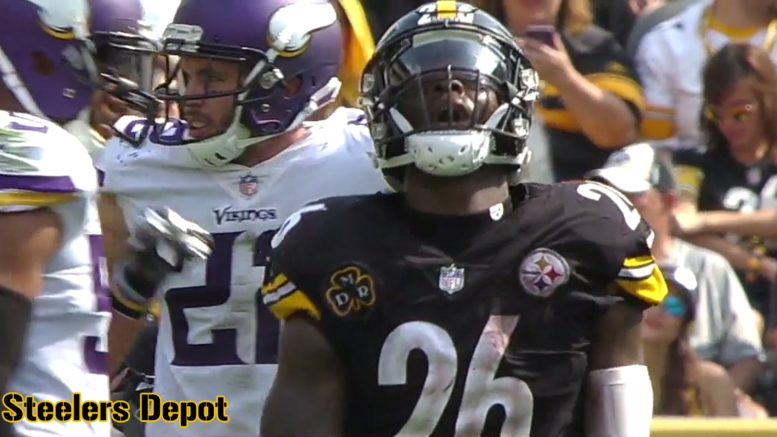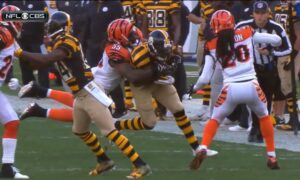There is no good reason that I can come up with the explain the vast disparity in the Pittsburgh Steelers’ play selection on Sunday, which featured a paltry number of rushing attempts in comparison to the 55 passes attempted by quarterback Ben Roethlisberger, with even more dropbacks than that number.
Le’Veon Bell had just 15 carries on the day, and he did reasonably well with them, rushing for 47 yards. But six of those 15 carries came on just the first two drives of the game in the first quarter. Unsurprisingly, that was the last time the Steelers would not be trailing in the first half, because that drive ended with a turnover that led to a touchdown drive.
Bell did carry twice on a four-play drive that followed, ending in a punt, but the runs ran dry after that. Despite trailing just 7-6 to start the third quarter, their first possession of the half featured 12 dropbacks from Roethlisberger, with two of them being negated by penalty, and just three carries from Bell. It gave the Steelers their final lead of the game after it ended in a field goal.
On their next possession, Roethlisberger threw the ball on first and second down, the second pass being intercepted and returned for a touchdown. What followed was a six-play drive in a one-possession game that featured five dropbacks, including a sack and another interception that was returned for a touchdown.
It was just 13-9 prior to that, yet they still felt that they needed to keep throwing the ball in spite of the fact that, since the first play of the game, which was a 49-yard bomb, they have been inefficient utilizing it to move the ball down the field.
Even after the second interception that was returned for a touchdown, it was an 11-point margin with 19 minutes left to play, but what we got next was a nine-play drive that featured seven dropbacks, including one that resulted in a sack.
Until after they went down by three possessions with less than two minutes to play, every other offensive play was from that point on a passing play. It’s somewhat unclear why the offensive game plan, against the top-ranked passing defense, turned so heavily to almost exclusively throwing the ball a week after the running game was finally looking as though it was effective.
What is even more perplexing about the imbalance is the fact that, for the most part, the passing game was only yielding marginal results, and the offensive line was giving up quite a bit of pressure. Roethlisberger even had two passes tipped at the line of scrimmage.
Most of the second half was run out of the no-huddle, even including the opening possession when the score was still just 7-6. Making yourself a one-dimensional team against a passing unit allowing 5.7 yards per pass attempt is less than ideal. Even in a distant age of the game, 5.7 yards per pass was the benchmark that Dick LeBeau wanted to hit.








